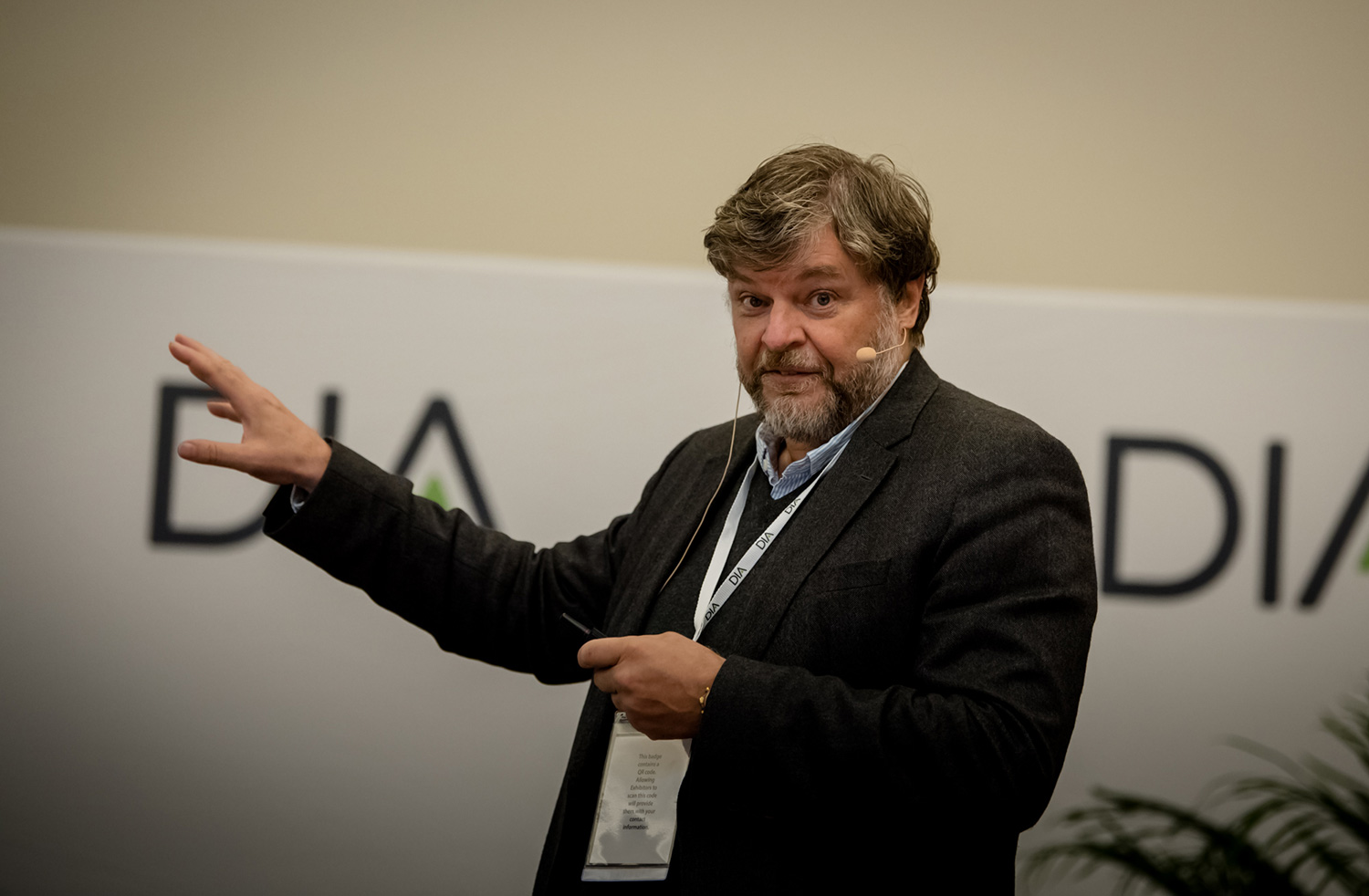Proceedings: DIA 2018 Global Annual Meeting

Interchangeable Biosimilars: EU and US Experiences and Perspectives
Chris M. Slawecki
DIA Senior Digital Copy Editor
iosimilars are biologic drugs that are approved for marketing in the EU and US after demonstrating therapeutic similarity to an original or innovator biologic product (also known as the reference biologic). A biosimilar product application in the US must include data demonstrating biosimilarity to the reference biologic. These data usually include analytical studies demonstrating that the biosimilar product is highly similar to the reference biologic, animal studies (including toxicity assessment), and data sufficient to demonstrate the safety, purity, and potency of the proposed biosimilar product in one or more of the indications for which the reference biologic is licensed.
Biosimilars are biologic drugs that are approved for marketing in the EU and US after demonstrating therapeutic similarity to an original or innovator biologic product (also known as the reference biologic). A biosimilar product application in the US must include data demonstrating biosimilarity to the reference biologic. These data usually include analytical studies demonstrating that the biosimilar product is highly similar to the reference biologic, animal studies (including toxicity assessment), and data sufficient to demonstrate the safety, purity, and potency of the proposed biosimilar product in one or more of the indications for which the reference biologic is licensed.
A biosimilar product application in the EU must demonstrate through comprehensive comparability studies that their biosimilar is highly similar to the reference biologic and that there are no clinically meaningful differences between the biosimilar and the reference biologic in terms of safety, quality and efficacy.
Because biosimilars avoid repeating clinical trials already conducted on the reference biologic, biosimilars have significantly reduced development timelines and, consequently, cost.
Session Chair Nielsen Hobbs noted in his introduction to Interchangeable Biosimilars: A Global Perspective that, while cost remains the most effective argument for these products in both the US and the EU, projections about how much these products could save the US healthcare system vary widely: The Congressional Budget Office, for example, projects a $25B reduction in direct spending on originator biologics across the 2009 – 2018 decade, while Express Scripts estimates saving ten times that amount, ($250B) in the seven years from 2014 – 2020.
Key Takeaways
- There is a dramatic difference between biosimilar uptake in the EU and in the US: FDA has approved eleven biosimilars to date, but there have been 41 biosimilars approved for use in Europe.
- Price is only one factor in the higher market share for biosimilars in Europe. Other factors include manufacturer reliability, physician comfort and experience with biosimilars, and patient acceptance of biosimilars.
- FDA has defined interchangeability as a standalone designation, but it is applicable only to biosimilars dispensed through retail and/or mail-order pharmacies.
- 41 US states and Puerto Rico have updated state pharmacy laws to allow for the automatic substitution of interchangeable biosimilars; debate remains about when this substitution can occur, and the length of time until the prescribing physician is notified about the substitution.
Nielson Hobbs and Chris Slawecki discuss biosimilar uptake in the EU and the US.
Steiner Madsen, Medical Director for the Norwegian Medicines Agency, made it clear that patient care has become much better in Norway, treating many more patients at less cost than before, thanks to biosimilars. Biosimilars have been in the EU market for twelve years, and no unexpected problems have occurred, leaving patients and physicians confident that EMA approval ensures the efficacy and safety of both the reference drug and the biosimilar. Many of these biosimilars will also be approved in the US.
In October 2017, the Norwegian Medicines Agency issued an official statement about biosimilars in Norway:
- Switching between reference products and biosimilars during ongoing treatment is safe and applies to the following situations:
- Switching from reference drug to biosimilar
- Switching from biosimilar to reference drug
- Switching from one biosimilar to another based on the same reference drug
- Further clinical studies to confirm safety of switching are considered unnecessary.
“One of the myths I have to bust is that the originator is the gold standard,” Madsen explained. “There is no gold standard–they’re all biologics.”

Steiner Madsen points out data on his session presentation slides.
Burich quoted a March 2018 interview with FDA Commissioner Gottlieb in which he stated: “We’re taking a hard look at how we determine interchangeability so that we can make determinations that biosimilars can be used interchangeably with the branded drugs.” These remarks, she explained, put a public face on building a sustainable biosimilars market in the US.
Session Chair: Nielsen Hobbs, The Pink Sheet & Scrip
Panelists: Molly Burich, Boehringer Ingelheim Pharmaceuticals; Steiner Madsen: Norwegian Medicines Agency; Chad Pettit: Amgen, Inc.
The US should carefully examine data from the more than 90 studies (encompassing nearly 14,000 patients) about interchangeability in Europe to consider its own next steps, Burich continued. Eleven approved products aren’t enough to sustain a healthy US biosimilars market. “We will need enablers to push the biosimilars market,” she said.
There are so many aspects for the US to consider: Do patients have, or will they be given, different co-insurance, co-pays, or other incentives, to switch from branded originators to less costly biosimilars? Do physicians have, or will they be given, similar incentives? Clear regulatory guidance on what interchangeability means from a labeling perspective remains lacking, as do payment and reimbursement frameworks. “Should these be aligned with the innovator product?” Burich asked the audience. “Should they NOT be aligned?”
“Cost is the core reason for biosimilars,” concurred Pettit. “The big wave is coming and those new products will drive competition in the marketplace.” Convincing payers of biosimilars’ value will be essential, but acceptance and uptake of biosimilars by patients and their physicians is even more important. Payers and regulators need to establish their respective playing fields clearly and with equanimity. Manufacturers must also remain committed to finding the best market opportunities for biosimilar products to sustain their own investment. Europe’s head start in this field will provide good lessons for the US to learn, he concluded. “The more education, the better,” he said. “The more data, the better, and the interpretation of the data must be accurate and precise.”

